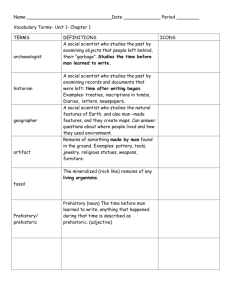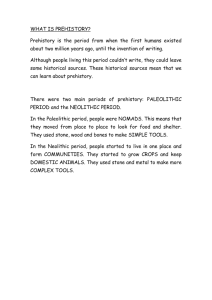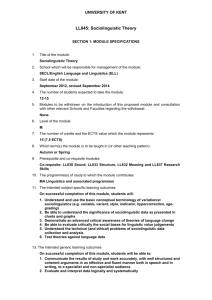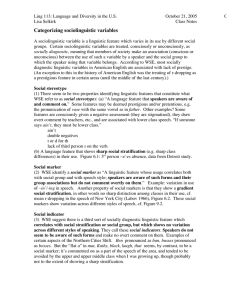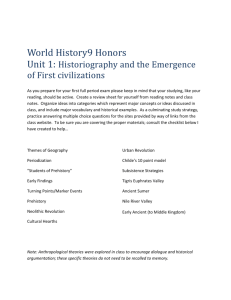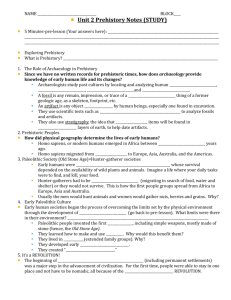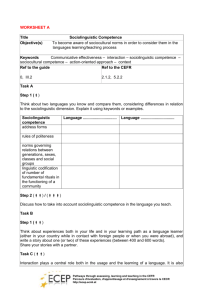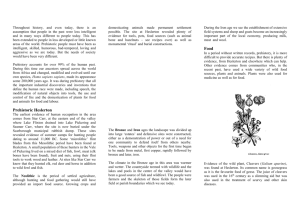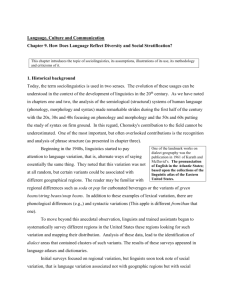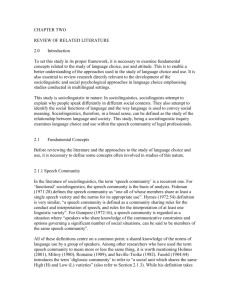Sociolinguistic Approaches to the Prehistory of the Mashriqian
advertisement
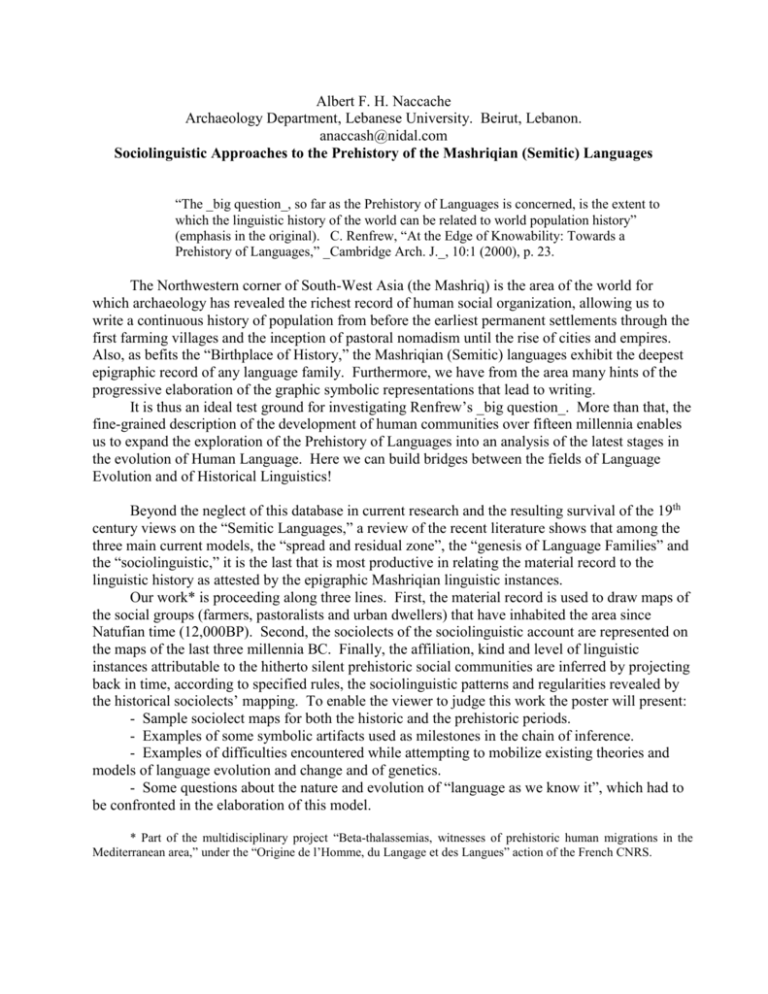
Albert F. H. Naccache Archaeology Department, Lebanese University. Beirut, Lebanon. anaccash@nidal.com Sociolinguistic Approaches to the Prehistory of the Mashriqian (Semitic) Languages “The _big question_, so far as the Prehistory of Languages is concerned, is the extent to which the linguistic history of the world can be related to world population history” (emphasis in the original). C. Renfrew, “At the Edge of Knowability: Towards a Prehistory of Languages,” _Cambridge Arch. J._, 10:1 (2000), p. 23. The Northwestern corner of South-West Asia (the Mashriq) is the area of the world for which archaeology has revealed the richest record of human social organization, allowing us to write a continuous history of population from before the earliest permanent settlements through the first farming villages and the inception of pastoral nomadism until the rise of cities and empires. Also, as befits the “Birthplace of History,” the Mashriqian (Semitic) languages exhibit the deepest epigraphic record of any language family. Furthermore, we have from the area many hints of the progressive elaboration of the graphic symbolic representations that lead to writing. It is thus an ideal test ground for investigating Renfrew’s _big question_. More than that, the fine-grained description of the development of human communities over fifteen millennia enables us to expand the exploration of the Prehistory of Languages into an analysis of the latest stages in the evolution of Human Language. Here we can build bridges between the fields of Language Evolution and of Historical Linguistics! Beyond the neglect of this database in current research and the resulting survival of the 19th century views on the “Semitic Languages,” a review of the recent literature shows that among the three main current models, the “spread and residual zone”, the “genesis of Language Families” and the “sociolinguistic,” it is the last that is most productive in relating the material record to the linguistic history as attested by the epigraphic Mashriqian linguistic instances. Our work* is proceeding along three lines. First, the material record is used to draw maps of the social groups (farmers, pastoralists and urban dwellers) that have inhabited the area since Natufian time (12,000BP). Second, the sociolects of the sociolinguistic account are represented on the maps of the last three millennia BC. Finally, the affiliation, kind and level of linguistic instances attributable to the hitherto silent prehistoric social communities are inferred by projecting back in time, according to specified rules, the sociolinguistic patterns and regularities revealed by the historical sociolects’ mapping. To enable the viewer to judge this work the poster will present: - Sample sociolect maps for both the historic and the prehistoric periods. - Examples of some symbolic artifacts used as milestones in the chain of inference. - Examples of difficulties encountered while attempting to mobilize existing theories and models of language evolution and change and of genetics. - Some questions about the nature and evolution of “language as we know it”, which had to be confronted in the elaboration of this model. * Part of the multidisciplinary project “Beta-thalassemias, witnesses of prehistoric human migrations in the Mediterranean area,” under the “Origine de l’Homme, du Langage et des Langues” action of the French CNRS.
